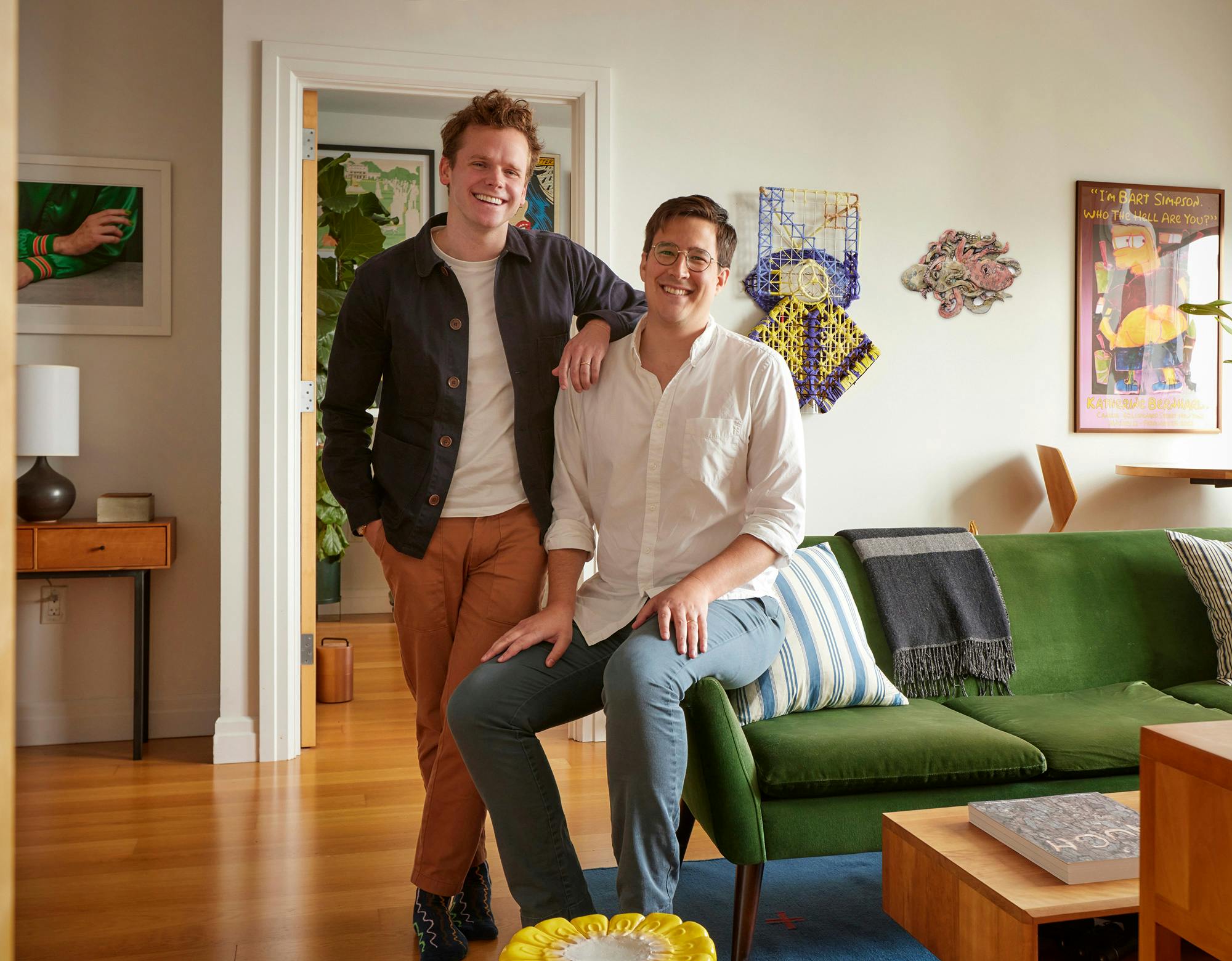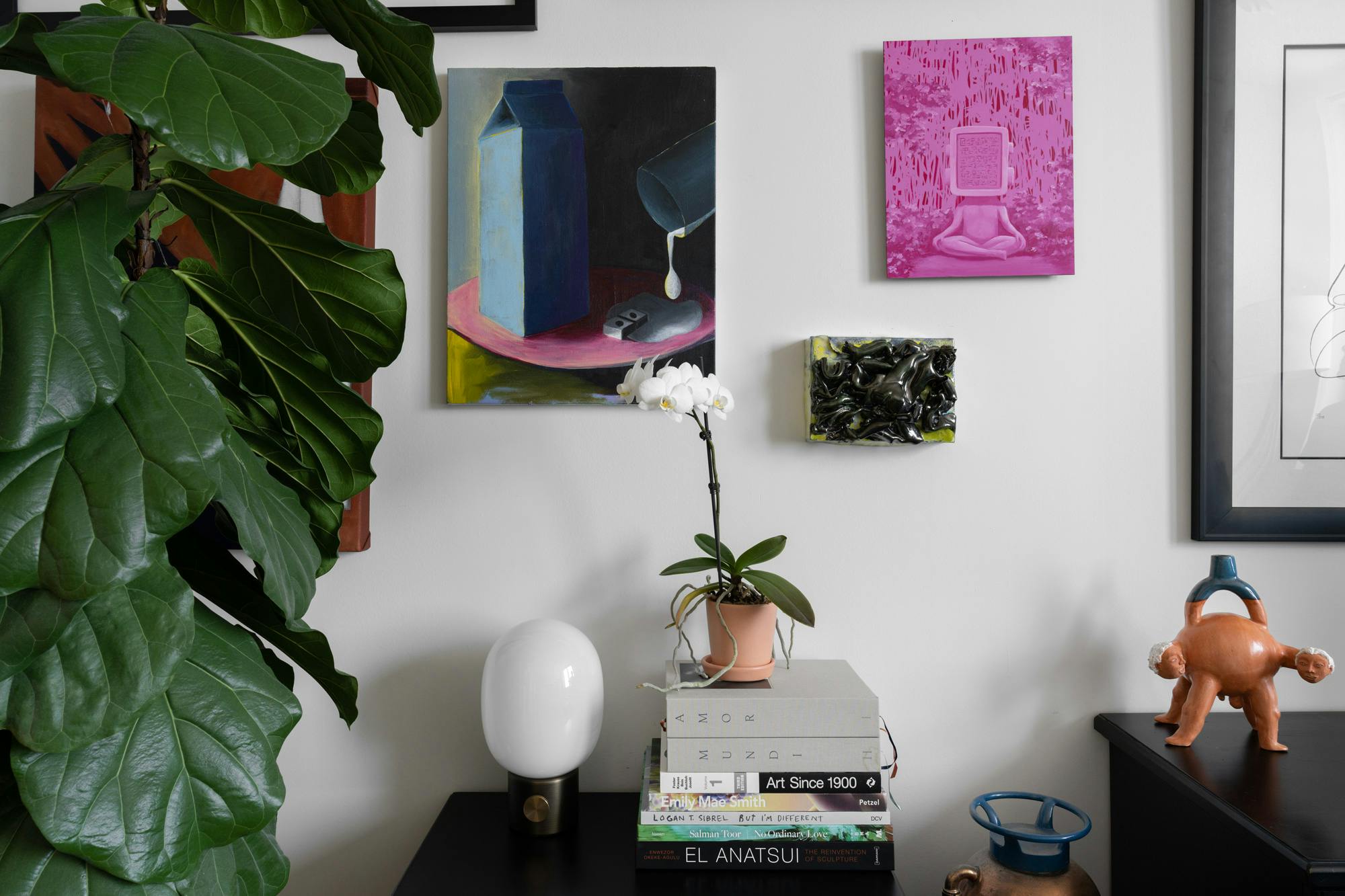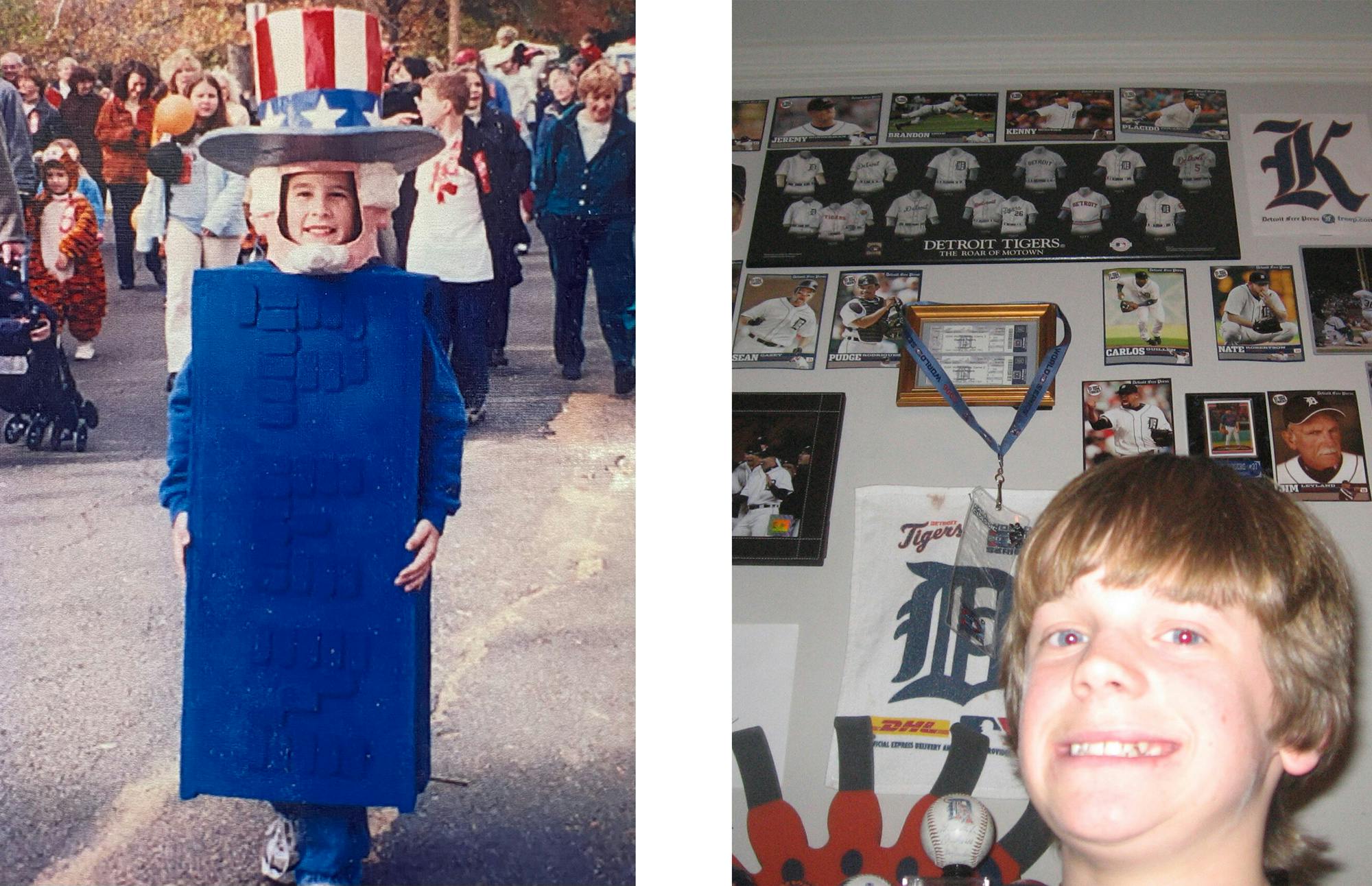Published June 1, 2023
Our Journey from Collector to Founder

While I have always appreciated art and reveled in visiting museums, I pursued a course of study and profession well outside of the art world. Yet, over the past few years, my husband John and I laid the groundwork to found Testudo—a platform that connects more people with art of our moment and helps them build enduring collections over time.
What sparked this dramatic career transition?
John and I grew up collecting. For me, it was Pez Dispensers and Roman coins. For John, it was Detroit Tigers memorabilia and The Simpsons merchandise. We both even had expansive nutcracker collections!
At the University of Michigan, John and I went on some of our very first dates at the UMMA (University of Michigan Museum of Art). On an unseasonably warm spring afternoon, we attended El Anatsui’s retrospective, When I Last Wrote to You about Africa (2013). The grand scale of his glimmering wall works assembled from countless discarded bottle caps left a profound impact. In particular, Oasis (2008) with its rich color and complex materiality was simultaneously familiar and yet so unlike anything I had ever seen before.
Following graduation, I began my career as a corporate bond trader and strategist at RBC Capital Markets, where I covered both high yield and investment grade industrials. Over my seven years at RBC, I witnessed the gradual electronification of the credit market. These integrated systems introduced greater liquidity and transparency to an opaque market that benefited clients and issuers despite reducing margins for dealers.
At the same time, John joined Farmhouse Pottery as the company’s first head of business development. Despite its location in pastoral Vermont, Farmhouse fostered a fast-paced atmosphere as online demand accelerated for their handmade stoneware goods. After leaving Farmhouse, he became a buyer for Bespoke Post, a men’s subscription box startup, before expanding his role to oversee a team of buyers.
As we settled in our first New York apartment together, our passion for collecting shifted focus toward art. We started with works on paper and ceramics by emerging queer artists. We often found artists through social media, which offered a small window into their practice, inspirations, and daily lives. Understanding this additional context truly enriched our experience as collectors, though it left us eager for more insight into their aesthetic and conceptual approaches.

Over the next several years, we spent more time visiting shows at Chinatown and Lower East Side galleries. We had a great friend from college, Daniel Sharp, who worked in Arts at Kickstarter and frequently recommended exhibitions for us to see.
As we took our first steps into the art world, however, we noticed firsthand that the art market can be inefficient, opaque, and inaccessible. We strongly believe that these challenges not only harm artists economically but also exclude many would-be collectors.
John and I stayed in our Brooklyn apartment throughout the pandemic. We spent much of that time in isolation on long walks through Prospect Park. During these excursions, our conversations drifted to our experience as collectors. We became consumed with researching and understanding the challenges facing the art world.
With our respective backgrounds in finance and e-commerce and our passion for collecting, we started Testudo to invite more people in and replicate our own collecting experience for others. We set out to create an art market grounded in transparency, inclusivity, and security. We assembled a small but mighty team of artists, collectors, and contemporary art specialists who are equally committed to realizing Testudo’s mission.
Driven by the objective to nurture new talents, we thoughtfully and gradually began building our cohort of partner artists, currently numbering 30 practicing studio artists. The works on Testudo, which range widely from sculpture and assemblage, to mixed-media painting and installation art, are aesthetically impactful and conceptually layered.
In an effort to further open up the too often exclusive art world, we felt that providing access to each artist’s intention and practice was imperative. We provide access to each artist’s intention and practice through documentary videos and images, original editorials, and online exhibitions. We firmly believe that a well-informed audience is better equipped to participate in the art world and ultimately collect contemporary art.
Artists on Testudo receive a higher profit from each sale than from the traditional gallery model, which ensures that more of each collector’s investment goes to the artists they support. Testudo also provides a secure avenue for reselling works purchased through its platform while allocating a portion of that secondary sale to the artist through a royalty. The interests of the artists and collectors are therefore aligned.
However, we cannot accomplish our mission alone. We are eager to introduce more people to the transformative experience of accessing, acquiring, and living with art. There are only estimated to be 8,000 to 10,000 art collectors worldwide who regularly purchase work. Compare this small figure to the 141 million annual visits to the top 100 art museums in 2022. Imagine a world in which even a small fraction of those museum-goers began their own collecting journeys. How many more artists could we support? How much more incredible work could forever change the ways in which we think, see, and feel?
Together, we can build a more fair and inclusive art ecosystem. Join us.
